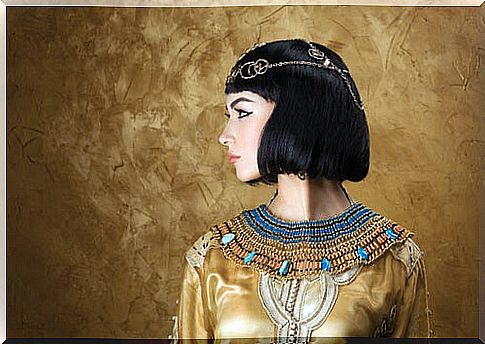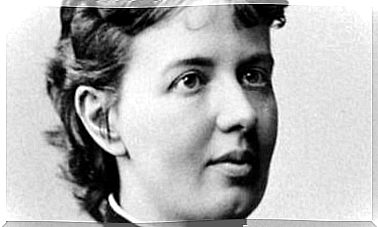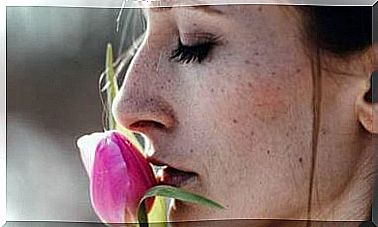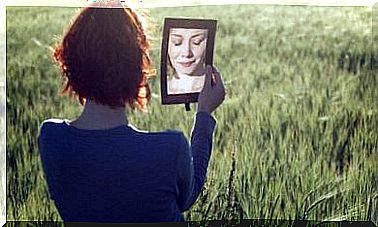Do You Know How Beauty Was Sought In Ancient Egypt?

At the end of the 19th century and the beginning of the 20th, a greater taste for this topic emerged in Europe and the United States. Since then, more and more objects and vestiges of what would be their day to day, cosmetics, beauty and their way of looking more beautiful have been found. It is good to note that it was not an art reserved only for women, men also had a sense for aesthetics. Objects that were used for grave goods have been found , as well as engravings, reliefs and paintings on the walls of pyramids and tombs.
All this has allowed archaeologists and experts in Egypt (called “Egyptologists”) to come into contact with much information about the beauty routine of the Egyptians, their extensive use of articles for such purposes in the region around the River Nile.
In turn, two papyri have been found, that of Hearst and that of Ebers, which reveal many recipes for the beautification and care of the skin. This points in the direction that the Egyptians believed in the existence of a very close relationship between cosmetics, health and beauty.
As for its hygienic conditions, in Ancient Egypt, it was very similar to the current one, due to the high temperatures and the dry climate of the desert, which can change at night as if nothing else. It is necessary to imagine what it was like to live in that time, thousands of years ago to understand their lifestyle a little. It was then necessary to treat the skin with the bath, a fundamental activity that was repeated several times a day.
The villagers bathed in the Nile River or in its channels, using mud to remove dirt. Those of the court or Royal family had more resources at their disposal and had special rooms for bathing, attended by their servants. They did not use clay like the others, but a kind of soap, which was created with a mixture of fat, salt and ash. To maintain oral hygiene, they were rinsed with water and natron.
Cleansing the body in Ancient Egypt
Once the body was free of dirt, various creams were applied in order to keep the skin better. One of the most used recipes was the mixture of 1 part alabaster powder, 1 part natron, 1 part sea salt and one part honey (as reported in the Ebers papyrus). There were also anti-wrinkle creams that were applied daily, which were composed of wax, moringa oil, frankincense and reed (same papyrus).
To avoid the dryness of the skin and at the same time protect it from the sun and the wind, they used oily creams, which were obtained from the fat of the ox or goose, as well as vegetable oils such as sesame, linseed, castor oil or almonds.
The hair is removed as a hygienic measure and not so much for beauty, to prevent parasites from appearing. To wax they used flint blades (later iron) and tweezers. They also had available a depilatory cream, composed of comb, sycamore, cucumber, boiled bird bones and fly excrement. It was boiled first and then allowed to cool a bit, to spread on the skin.
The Egyptians put great emphasis on avoiding the bad smell, for this they used a mixture of quail egg, resin and turtle scales.
As for the hair, it was a symbol of distinction, for which it received more care than any other part of the body. Vegetable oil and fat were used in equal parts against baldness. To dye or hide gray hair, various dyes with bull’s blood and henna were used. Egyptian women used ivory, wood and bone combs and hairpins for daily brushing and beautification of their hair. These have been found in quantity in the grave goods. Wigs were also found, which were made with plant fibers and human hair, scented with date oil, a very precious object in the desert.
Eyes in Ancient Egypt
Almost as much as the hair, the eyes were treated with dedication by the Egyptians, both women and men. Not only for aesthetics, but as protection against regional climatic situations, excess sun and light, sandstorms and winds, which could cause ailments and infections.
The make-up was for women in turn a repellent for insects and flies. There were two types: the Udju, from Lower Egypt, made of green malachite, and the Mesdemet, from Upper Egypt, created with galena from Aswan. Although it was a necessity, it later became a symbol of refinement, because beauty in this region was related to perfection, as well as to the worship of the eternal. They were all very careful with their cleanliness, to be able to guarantee their life in the Hereafter, where the bodies remained unchanged.









